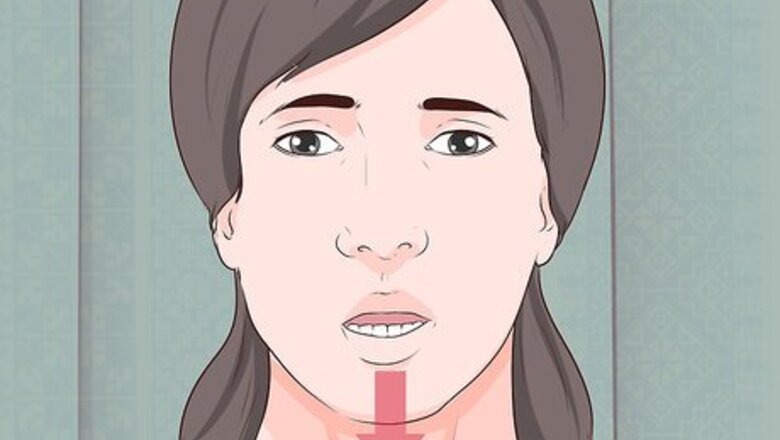
views
X
Expert Source
Pradeep Adatrow, DDS, MSBoard Certified Dentist & Oral Surgeon
Expert Interview. 30 September 2020.
Relieving Pain by Cracking Your Jaw
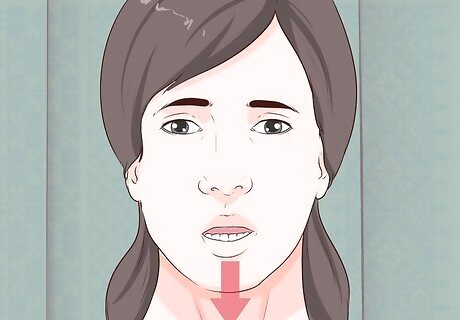
Relax your jaw. Some people find that trying to crack their jaw helps ease pain from TMJ or other jaw issues. To do so, relax your jaw and let it drop so that your mouth is open slightly.
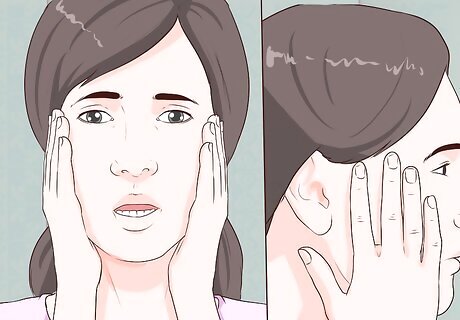
Place your palms flat against the side of your jaw. Position your palms flat against each side of your face. Your thumb and index finger should make a “U” shape around your ear when you do this.
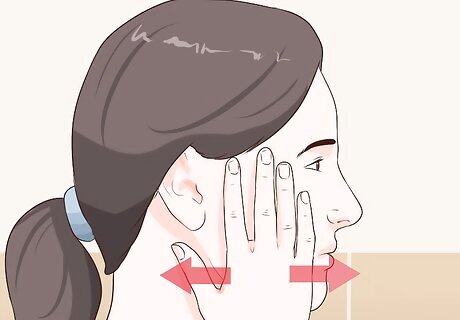
Press against your jaw, alternating between sides. Press your palm against your jaw, moving it to one side and then the other. The goal is to wiggle your jaw back and forth until you can get it to crack or pop back into place.
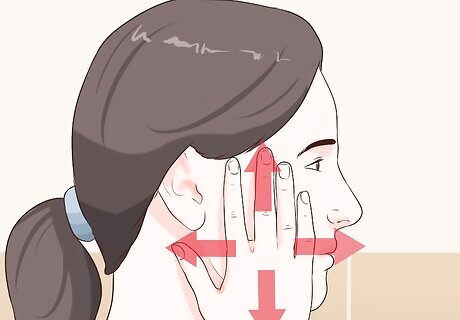
Move your jaw in different directions. In addition to moving your jaw side-to-side, you can also try moving it forward, backward, up, and down. Everyone is different so you might have to experiment with what works for you to be able to crack your jaw.
Stretching Your Jaw
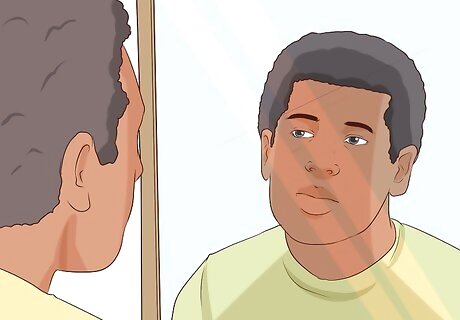
Look at your jaw’s alignment in a mirror. Stretching your jaw can also help relieve pain. Begin with your jaw in a relaxed and centered position, but do not allow your teeth to touch. Use the mirror to see if your jaw is centered. You may have tension in your jaw without realizing it. If this is the case, your jaw may be shifted to one side or the other. When the mouth is closed and in a neutral position, the lips should be closed but the teeth should not be in contact.
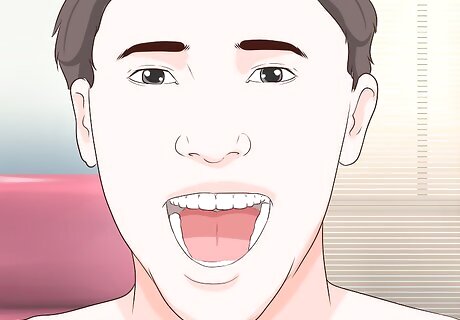
Open your mouth as wide as you comfortably can. As you are opening your mouth, imagine that your jaw is dropping to the ground and that it is pulling your mouth open. You should feel your jaw muscles being stretched, but should not be in any pain. Be careful not to over-stretch, the joints in your neck and jaw are small and can be easily irritated. There is no need to open your mouth past the point of discomfort. Hold this position for five seconds. While you do this, look upward toward the ceiling. If there is any tension in your cheeks, you will begin to feel the muscles relax as you stretch and hold this position.
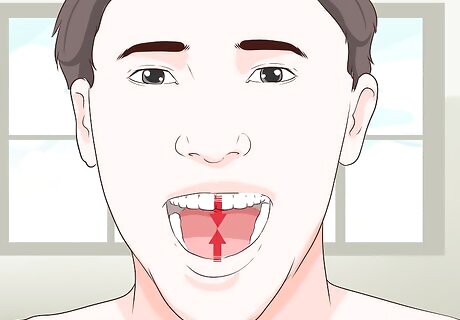
Close your mouth slowly. As you begin to close your mouth, bring your gaze back to center. Be sure that your jaw returns to a centered and neutral position. Use the mirror to check the alignment of your jaw.
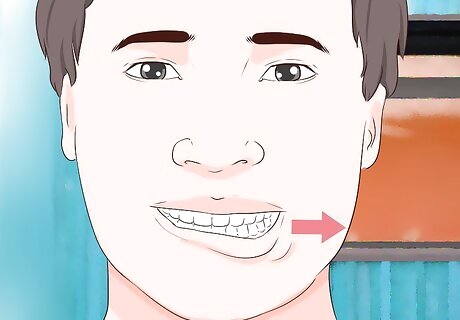
Stretch your jaw to the left. Slide your jaw as far to the left as you comfortably can while being careful not to let your teeth come in contact or grind. As you stretch your jaw to the left, look to the right. You may feel tension in your temple when doing this. Hold this positions for five seconds. Remember to keep your eyes to the right as you hold this stretch. You may feel tension in the opposite corners of your jaw.
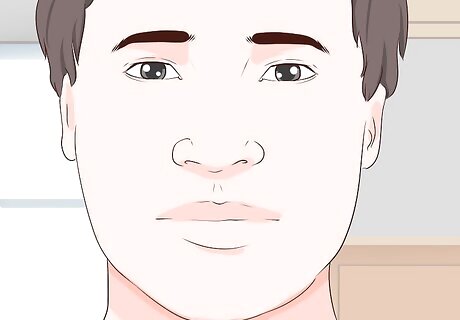
Return to a centered and neutral position. After allowing the muscles to relax, slowly close your mouth and bring your lips together. Bring your gaze back to center.
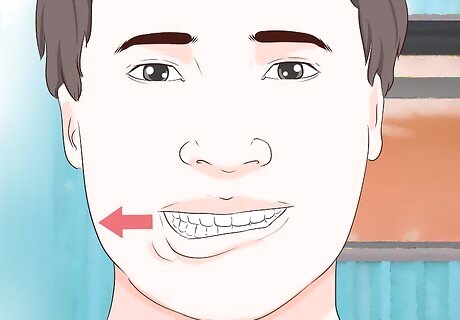
Stretch your jaw to the right. Repeat the stretch, but this time, to the opposite side. Remember to look the opposite way of the stretch and be careful that your teeth do not grind. Hold for five seconds. Allow the muscles to relax before returning your jaw to a neutral position.
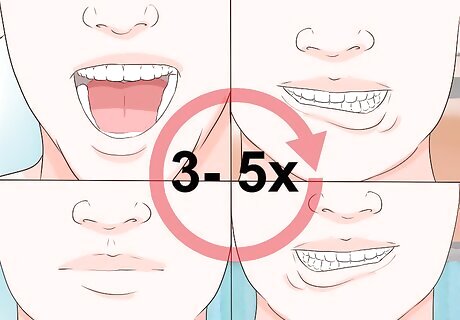
Repeat the entire process. Whenever you feel your jaw beginning to tighten up, perform this stretching routine three-to-five times.
Changing Your Behavior and Seeking Treatment
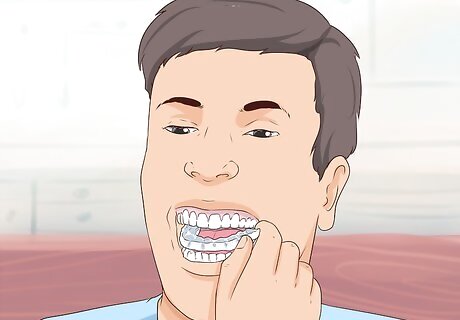
Wear a bite splint at night. Pain in the jaw is often caused by grinding your teeth, also known as bruxism, or putting tension on muscles around the jaw while you sleep. A bite splint, which you can get from your dentist, is a removable protective device that covers the surface of the teeth and gums while you sleep. Wearing a bite splint at night can help decrease this tension and, therefore, relieve the pain in your jaw. Symptoms of bruxism can include flattened, flat, loose, or chipped teeth, worn tooth enamel, increased tooth sensitivity, headaches originating in the temples, pain that feels like an earache, and indentations on your tongue.
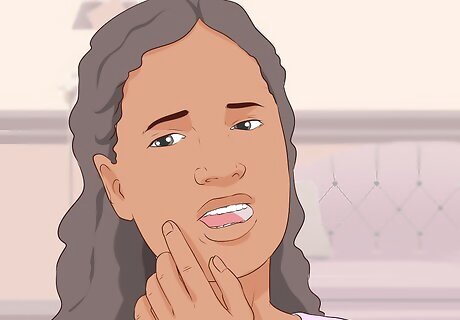
Check your jaw for tightness throughout the day. It won’t be easy, but training your brain to stop doing behaviors that aggravate your jaw issues can help ease the pain you feel. For example, pay attention to when you clench your jaw. You can help train your brain to recognize when you’re clenching your jaw by checking it for tightness when you perform certain activities. For example, check your jaw for tightness every time you walk through a doorway, close a browser window, or go to the bathroom. Choose actions you know you perform multiple times on a daily basis.
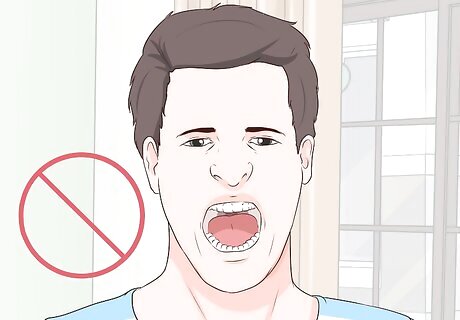
Avoid opening your mouth too wide. Opening your mouth too wide can also cause your jaw to pop out of place. To help prevent this from happening, keep your mouth closed as much as possible when you do things like yawn, talk, or eat.
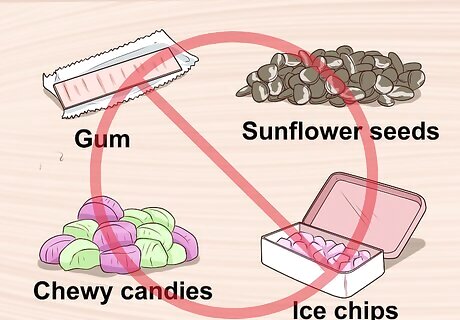
Avoid foods and candy that require excessive chewing. You should also make an effort to stay away from foods that require excessive mastication. Having to chew more than normal can cause pain in your jaw. In general, you’ll want to stay away from things like gum, sunflower seeds, chewy candies, and ice chips.
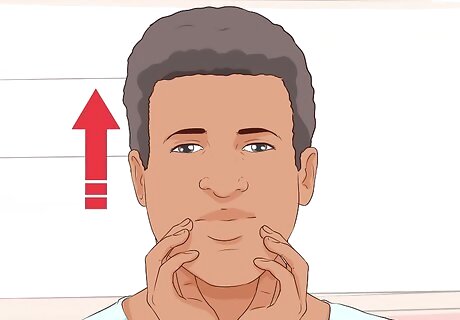
Implement a massaging routine. Stretching and massaging your jaw can help relieve pain and relax the muscles. Start by massaging your jaw once a day before bed. If you are experiencing more pain than usual, add a second session in the morning until the pain has subsided and return to massaging it only once a day. To massage your jaw, place your fingertips on your lower jaw and move them up, pushing on the skin while you do this. Once your fingers reach your scalp, remove them and start the movement again from your lower jaw. Do this for about 2 minutes.
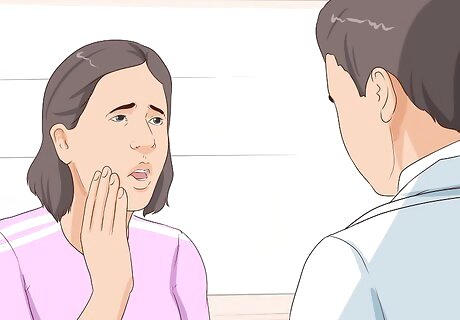
Go to the doctor or dentist for severe, consistent pain. Most jaw pain will go away on its own or through self-massage and stretching. If you have consistent, severe pain, however, you should seek professional help. You should also visit a professional if you’re having trouble swallowing your food or if it hurts to open and close your jaw. Your dentist or doctor can both diagnose TMJ and guide you as to what treatment is best for your situation.
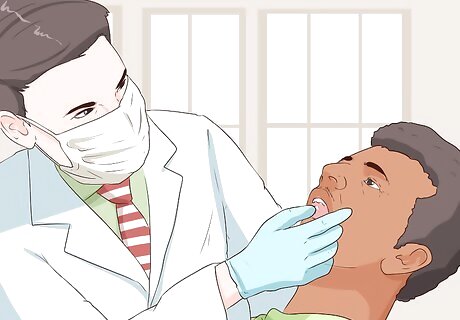
Go to a hospital or emergency room if the jaw is locked in place. If your jaw is locked in either an open or closed position, you should go to the hospital or emergency room to get help. To treat a locked jaw, the doctor will sedate you to a comfortable level and then manipulate the jaw until it returns to the correct position.


















Comments
0 comment